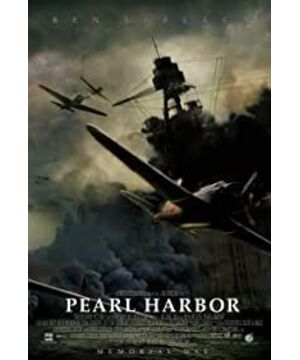The idea of the Japanese is probably "only do business with friends", so that before the negotiation, everyone is an enemy, and they have done enough secretly to prepare with both hands. The idea of the Americans is probably "do not do business with the enemy". Before the whole talk collapses, the business will continue, and the capital will still circulate. These two thoughts are in peace until Pearl Harbor.
Background analysis On the
battlefields of Western Europe, the German army has begun to invade the Soviet Union while maintaining air fire suppression on the British mainland. On the battlefields of North Africa, General Rommel continued to advance. Although the support from the rear has gradually slowed down, it can still support the entire North African battle.
On the battlefield of the Far East, the Japanese army carried out a large-scale sweep of the northern base areas, and hoped to open up the military supply line to Myanmar through the battle of Guangdong, Xianggui, and Guangxi.
It is worth mentioning that the United States has abandoned the Philippines and the entire Southeast Asia. In the Pacific battlefield, there are only islands, Midway Island, Honolulu and other islands, and these all depend on the protection of the Pacific Fleet. In other words, at that time, the United States gradually began to support the Western Front because it was betting that Japan would not dare to make too much moves on the Far East battlefield. Therefore, the loss of Pearl Harbor is not just a problem of paralysis or laxity, but a strategic gambling.
A brief description of the
process A brief description of the process is a basic understanding of watching movies; besides, the history education from elementary school also covers this aspect. The result, of course, was that the United States declared war on Japan until the end of the war in 1945.
Japan's cost-benefit analysis
For Japan, the cost of input is actually not high. On the battlefield of China at that time, the Japanese Army gradually fell into a state of stalemate, and the offensive momentum has tended to slow down; while the Navy also needed to protect Southeast Asia, Hong Kong and other places. For a country whose land area is very limited and its population is not large, a surprise attack is the best choice. Because of two or three rounds of surprise attacks, the opponent's military center can be severely damaged. In the raid, you don't need to invest a lot of combat troops, the air force and a small amount of navy are enough. This is not to count as winning more with less, because the opponent is not yet ready; in the real offensive force, the Japanese army has an absolute advantage in using sneak attack tactics. The highest cost at that time, I think it was the cost of information. Of course, Japan understands American radio monitoring, but there is nothing it can do. If you want to confuse the Americans, apart from the ambassador pretending to negotiate with the United States, you need to make more military preparations. In addition to planning for a long time, the plan must be easy to communicate and have clear goals. Because of the need for radio silence, after the Japanese warships left the scope of the US reconnaissance, the communication between the warships could only be done through semaphores and shouts, and the contact with the military might have to be completely interrupted. Otherwise, once it is searched by radar, the plan will be completely exposed. Judging from the subsequent performance of the Japanese in the Pacific battlefield, the Type Zero planes are basically committed to suicide, which means that this part can basically be classified as sunk costs.
The benefits are mainly strategic. The word income is not necessarily positive, it can also be negative.
Let's talk about the gain first, as long as the gain is successful in disintegrating the US Pacific Fleet and eliminating a stinger behind it. At least for a period of time, it is impossible for the United States to have a decent Far Eastern navy threatening Japan's "Greater East Asian Co-Prosperity Circle" plan. Although this offensive was not aimed at the United States, considering that the United States is also relatively large, the deterrence of air strikes in the United States is not as good as Pearl Harbor. The sneak attack this time is more like seeking "on the ground", so let's talk about it first.
Besides profit and loss, profit and loss are also strategic. After the Pearl Harbor war, Japan's front line stretched longer, and it needed to be deeply guarded against back attacks from the United States. For Japan, whose economic strength is very limited, choosing the US as its opponent has a large leverage factor. It is possible to step by step to solve the US and help Germany and Italy to further establish its advantages in Western Europe; it may also get into trouble and fall into the quagmire of the Far East. Can't extricate themselves. What Japan lacks in consideration is the estimation of the speed of recovery of American power. The United States has not really participated in the war before. Although it has experienced the Great Depression in 1929-1933, under the effect of Roosevelt’s "New Deal", the economy is gradually coming out of austerity, especially the great development of the military industry, which has accelerated the recovery of the US economy. . Therefore, when the United States justified its declaration of war on Japan, Japan and the United States fell into a bitter battle on the Pacific battlefield. Coupled with the global blockade of the US fleet, Japan's foreign trade is basically limited to East Asia and the South Asian subcontinent. For Japan, which itself is an export-oriented economy, raw materials are the biggest shortcoming. After the shortcomings appeared, Japan began to show a strategic defensive position, whether on land or in the sea.
The cost of cost-benefit analysis in the United States
is huge, whether it is strategic or on the ground. First, the Pacific Fleet was lost in vain, and the effect of checks and balances on the Pacific battlefield was reduced a lot. The deterrence of the United States in the Far East was reduced to near Hawaii, which was not enough to pose a deadly threat to the Japanese. Second, after the declaration of war, the United States had to support Europe. The "friends" on the battlefield must also guard against Japanese attacks on the United States, which is even more difficult in the cracks; again, it is a loss of confidence. When everyone thought that the United States did not have to fight, the Japanese succeeded in educating American politicians. We, the "pessimism" in the United States at that time spread. In the face of the lessons of blood, American youth finally understood that "heroes" still need to shed blood and sacrifice. This is still very different from the illusions in their minds. On the one hand, the domestic economy needs to be boosted, and on the other hand, it has to export revolution to the outside world. The United States has paid a heavy price for the gambling game.
In terms of income, judging from the outcome of World War II, it is undoubtedly positive. The enthusiasm of the American youth to join the army was fully agitated, and the army could justifiably participate in various battles of the Allied forces. So generals such as Patton, Eisenhower, and MacArthur finally had a stage to display their abilities. Eisenhower also successfully ran for the president of the United States. . In the domestic economy, Roosevelt exercised his presidential power more extensively under the state of war authorized by Congress. Keynesianism finally succeeded in becoming the mainstream economic thinking in the United States, and it has been pursued until the "stagflation" in the 1970s. Before the period. Stimulated by the military industry, both science and technology and industry in the United States have developed by leaps and bounds. The prestigious science and technology schools headed by MIT have gradually become synonymous with American education. From a global perspective, although the United States’ status as the largest economy will be more stable if it does not participate in the war, the gains gained by participating in the war far exceed the value of economic data, but it is an increase in the right to speak. The United Nations is headquartered in the United States, and the Bretton Woods system, the U.S.-Soviet struggle for hegemony, and the subsequent NATO organization completely removed Europe from competing with the United States. With the help of the occupation of Japan, the United States, at least for now, is no longer possible for a second Pearl Harbor incident. It is worth mentioning that the gains this time still have influence until now.
View more about Pearl Harbor reviews











